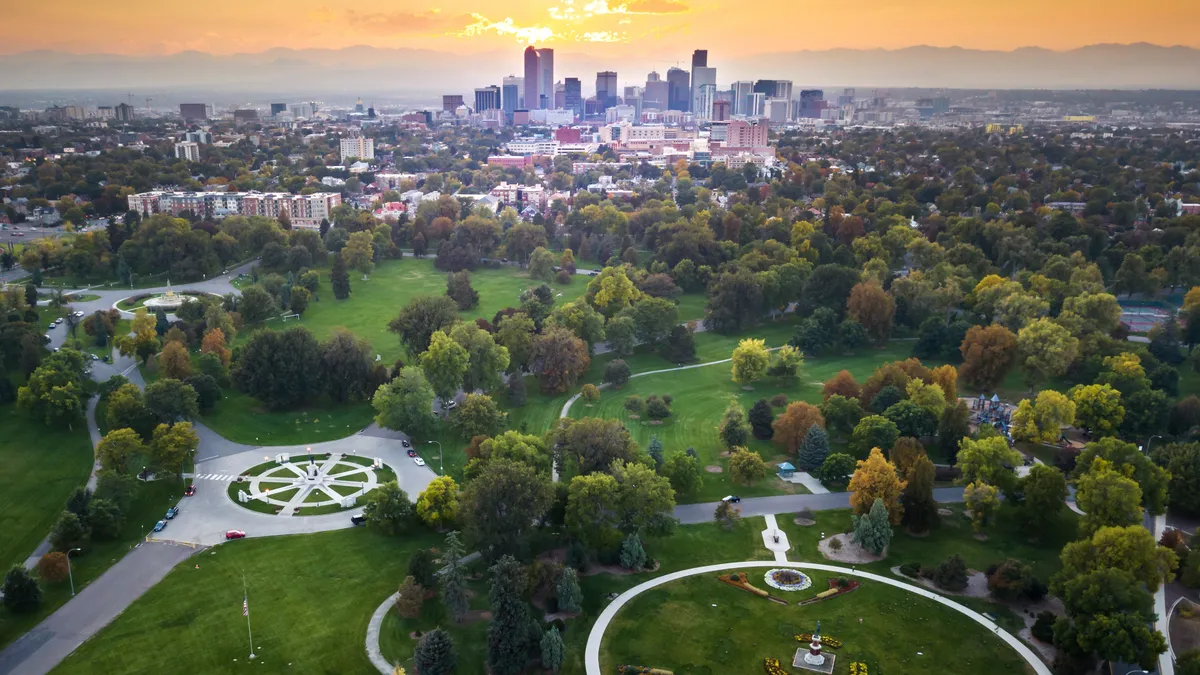Dive Brief:
- Cities are increasingly incorporating ideas for "green infrastructure" into their planning, but what they mean by that can be unclear and inconsistent within and across cities, according to recently published findings from the Cary Institute of Ecosystem Studies.
- The analysis of 122 plans from 20 U.S. cities found that 39% of plans — be they climate, sustainability, watershed restoration, or comprehensive or strategic plans — do not explicitly define green infrastructure, and of the ones that do, over half offer several different definitions.
- Gaining a more consistent understanding of green infrastructure matters because it's become the main term used in urban planning for a variety of environmental interventions, and the pandemic has further spotlighted the importance of safe and healthy outdoor spaces, said socio-ecologist and lead author Zbigniew Grabowski. Researchers believe that clarirty will allow cities to better learn from one another.
Dive Insight:
The empirical study is the first of its kind, according to the New York-based Cary Institute, and it is part of a multiyear project assessing green infrastructure’s role as "a universal good." Researchers aim to analyze whether urban ecological services are provided equally to all urban residents, keeping in mind concerns that some infrastructure programs that cities plan accelerate gentrification and housing displacement, Grabowski said.
Green infrastructure, which Grabowski described as a "rapidly evolving field," has become one of the main avenues through which cities are aiming to become more sustainable and resilient. Examples could span from pursuing more distributed solar electricity and building more bike paths to planning for a citywide network of interconnected streams or using bioswales or rain barrels.
The analysis of city plans found hundreds of different types of green infrastructure named. Trees, rain gardens and green roofs were among the features most commonly included, but certain energy and alternative transportation technologies came up in some cases. Cities also identified green infrastructure's range of potential benefits, including improved water quality, city livability, property value, recovery from extreme weather events and social revitalization.
Although researchers did not originally plan to conduct the definition analysis, Grabowski said they quickly realized that to study a regionally diverse list of cities, they couldn't move forward without more clarity.
Overall, hydrological or stormwater-related themes dominated, which tracks with how the U.S. Environmental Protection Agency has used the term for the past 15 years. But a narrow focus on stormwater can skew cities to favor engineered facilities over parks and urban green spaces and may restrict potential project funding. Ultimately, researchers recommended cities consider a more comprehensive definition. Grabowski highlighted Atlanta, Denver, and Portland, Oregon, as examples of cities that have taken a more integrative approach to planning.
Grabowski predicts that the evolution of urban planning during the pandemic will continue to drive interest in the assets cities have been classifying as green infrastructure. “We're going to see [a] much greater emphasis on providing adequate open space, providing healthy environments to cities, through a variety of ecological features," he said. "This idea of having an interconnected nature throughout the city that also provides opportunities for recreation, [and] alternative transit in the spaces to safely recreate and gather, is going to be a major focus.”












